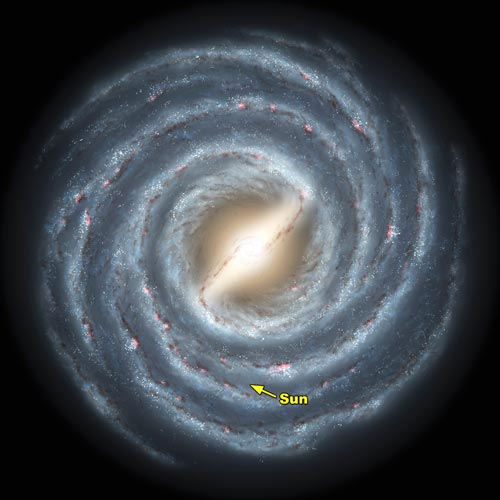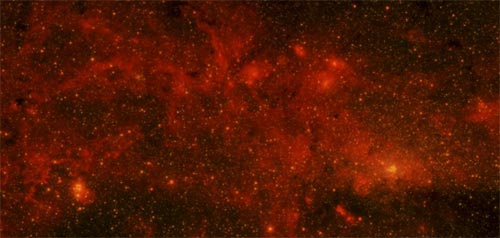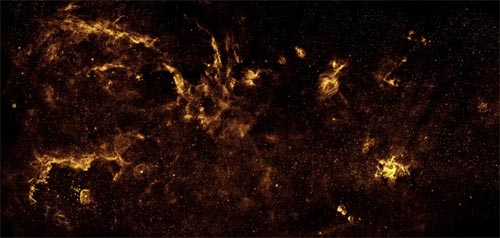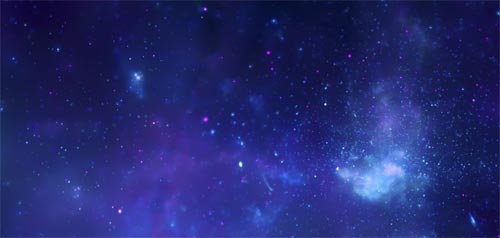Panorama of the brilliant beauty of the center of the Milky Way
Combining images taken from multiple space telescopes, scientists introduced the beauty of the center of the Milky Way, the galaxy containing the Earth.
The colorful swirling clouds of cosmic dust scattered with brilliant star clusters are what we can see in this wonderful picture of the Milky Way. This is a combination of individual shots of Hubble space telescopes, Spitzer and Chandra.

Our Milky Way is a spiral galaxy with stellar branches orbiting a center with a shaft structure.The Solar System is in the middle of the Orion branch of the inner rim.The branches of the Milky Way are named after the constellation near it seen from the Earth.
This event also reflects the international cooperation on astronomical research between the European and US Space Offices. Each telescope contributes to different color-filtered photos.
These photos show the central part of the Milky Way, taken to celebrate the 400th anniversary of the Galile's publication of its telescope invention.



Three photographs of three space telescopes record the different radiation coming from the center of the Milky Way.
The first image by the Hubble telescope captures near-infrared radiation, showing the region with the strongest star-forming activity with many young stars. The center area is the bright area on the right.
Spread to the left is the wide arc of gas that is heated by the big stars in the star cluster. Thereby, Hubble has discovered many new stars with high mass.
Radiation from stars creates complex structures of gas layers. This is one of the clearest infrared photos of the central Milky Way ever taken.
The second photo by the Spitzer telescope captures infrared radiation. Radiation from stars creates colorful dust clouds with complex structures from solid spheres to thin and long bands.
The other image by Chandra telescope captures X-rays emitted from the hot air millions of degrees under the effects of stellar explosions and escapes from the supermassive black hole at the center of the galaxy.
The bright blue dot on the left is a binary star system that can contain a black hole or a neutron star. A supermassive black hole, folds the Sun four million times in mass in the bright area on the right.

The picture is synthesized from the individual photos above.
The above three telescopes have pointed the lens towards the center of the Milky Way, where we are 26,000 light-years away. Scientists can see through the translucent dust to see strong activity near the center using infrared and X-rays.
Dr. Robert Massey, British Royal Astronomical Society, said: 'This picture helps us look back on the astronomical achievements achieved in just 400 years, since the first time humans observed with telescopes. valve. In fact, we have only known about our galaxy center in recent decades and now everything is very clear. '
- The sparkling beauty of the center
- The center of the Milky Way may contain thousands of black holes
- See the mesmerizing beauty of Iceland nature
- How to see the Milky Way?
- Enjoy the pure Milky Way season
- Discover an X-shaped structure in the center of the Milky Way
- You are looking at the clearest picture of the so-called
- Strange star groups move rapidly to disturb the Milky Way
- Fun little-known facts about the Milky Way
- The 84 million star image is at the center of the universe
- Why are there so many gas clouds migrating from the Milky Way?
- The mysterious bubble appears between the Milky Way
 Van Allen's belt and evidence that the Apollo 11 mission to the Moon was myth
Van Allen's belt and evidence that the Apollo 11 mission to the Moon was myth The levels of civilization in the universe (Kardashev scale)
The levels of civilization in the universe (Kardashev scale) Today Mars, the sun and the Earth are aligned
Today Mars, the sun and the Earth are aligned The Amazon owner announced a secret plan to build a space base for thousands of people
The Amazon owner announced a secret plan to build a space base for thousands of people